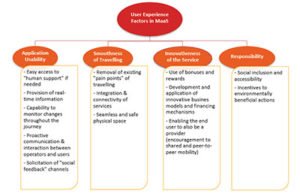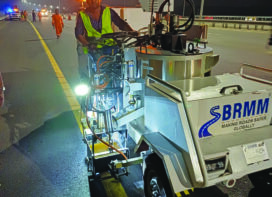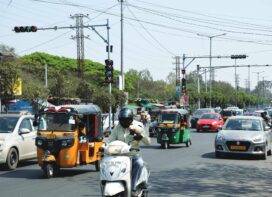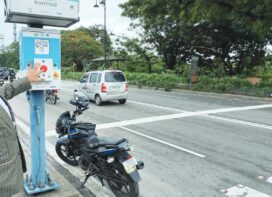Technological Cornerstone: Interoperability
In terms of technology, the critical points for Maas are interoperability, roaming and harmonized standards. Fostering interoperability is a common responsibility for all parties. An essential prerequisite for the effective deployment of a MaaS ecosystem is an open middle-layer platform to connect the transportation service providers with the MaaS operator. This B2B platform, established with common rules, common (standardized) interfaces/APIs and consistent governance, enabling multiple business models, removes the need for each stakeholder to address technical and organizational obstacles individually. The B2B platform can be managed or operated by an entity distinct from both transportation service operators and MaaS operators. Furthermore, the platform manages the business processes related to the collection of data from the various service providers, including trip information, routing, and transactions, takes care of the various B2B clearing processes, and makes relevant data available to MaaS operators in the form of APIs, thus avoiding generating redundancy for such processes when interfacing with multiple MaaS operators.
Enabling Regulatory Framework
The boom of digital services has changed the way services are consumed and provided, restructuring business models of the sector and questioning the appropriateness of the existing regulation. Transport regulation is based on historic and conventional conceptions, assumptions and categories and may have to be adjusted. Regulation, for instance, has remained transport-mode specific throughout these times, which might hinder the development of MaaS.
As a result of the involvement of IT-based services, the boundaries between and within the various transport services are changing and blurring, giving rise to a new multi-modal reality. Greater inter-modal competition and convergence is easily foreseen. But not only are the boundaries of transport modes blurred, also the functions of the different actors, e.g. the role of the users and the providers, are evolving. This will also challenge a prevailing rough division and definition of “public” and “private” transportation.
The competitiveness and attractiveness of MaaS services relies heavily on availability of high-quality data. The first step towards a digital transport system is harmonization of data, supported by appropriate regulation and standards. Similarly important is to enforce safe and secure real-time access and openness of data, as well as ensure clarity regarding liabilities of parties with principal control over the data. In addition to open standards, an imperative requirement is a high quality of data, be it a transit schedule or a booking confirmation for a shared car. Reliable data, serving as a basis for advanced and up-to-date travel information services, is one of the main prerequisites to MaaS uptake, creating more predictable travel chains and inducing people leave their cars at home.
Also the regulation of privacy and data security should be put in place to secure public confidence. Once general principles for data economy, e.g. those governing data protection and privacy, are agreed at general level, their application to the transport sector should not cause controversy. The steep rise in the collection and processing of personal mobility-related data has already been seen and consumers are getting increasingly cautious, waiting for the regulators to intervene. Users must have the assurance that they have full control over how and for what purposes their data are being used.
The discussion, however, moves beyond exchange of data between various platforms. With the ascendance of shared mobility services, it is vital that the mobility operator has the ability to assess the status of the asset used (be it a vehicle, train, or quadricycle) in order utilize it as efficiently as possible. The ability to access in-vehicle data in real-time has become increasingly relevant for the entire automotive value chain in the era of the “connected car”, as it impacts the competitive viability of the automotive value chain as a whole.
New roles for public administration
A particularly important role in the development of a fully open and sustainable MaaS ecosystem needs to be assumed by the public administration, both at a local and national level. They should remove initial development barriers and jump-start the development of MaaS. Some public authorities are already moving beyond their traditional role as infrastructure providers by enabling and promoting mobility services of new entry-level players.
The new digitally-powered mobility requires leadership that works with the global picture in mind, helping to move from a standalone vision to an interoperable and interconnected picture. Therefore, the public authorities may need to adopt new open working methods, and also include those who are keen to enter the market into the stakeholders’ dialogue. Also the voice of users of the transport system, i.e. the customers, namely citizens and tourists and the users of logistics should be well taken into account.
MaaS is “over-the-top” service of mobility
The fast development of 5G and block-chain technologies might provide new opportunities for MaaS. Although the technical enablers in terms of coverage of mobile networks and capacity of 3G/4G networks provides are assessed to serve as a sufficient platform for current MaaS services, the 5G will however will bring many new possibilities for MaaS enabling the provision of more advanced location-based services as well data-intensive solutions. Also the benefits and use cases of block chain-based systems would be well worth studying in a MaaS context. The block chain technology might be particularly helpful for MaaS as regards 1) the issues of trust in payment and transaction procedures, and 2) the question of “who owns the customer”, which can be a challenge when the new entity of a MaaS operator gets introduced between the customer and the transport service provider.
 Roaming of the MaaS services, from city to city and across borders, is one of the key elements for the success of MaaS. By enabling service roaming we ensure not only quick scalability but more importantly unprecedented usability for end-users. Given that people already cross borders with their vehicles, it is important to allow them that same freedom of movement without vehicle ownership. Eventually the target will be the global roaming of mobility services. In the telecommunications industry, roaming is made possible through providers who have reached cooperative agreements and it is worthwhile to learn from the experience from the telecom industry, regarding both regulatory and self-regulatory measures. In this context, MaaS can be referred as an “over-the-top” service of transportation, similar to Netflix, Spotify and Whatsapp, reforming completely the way services are provided and consumed.
Roaming of the MaaS services, from city to city and across borders, is one of the key elements for the success of MaaS. By enabling service roaming we ensure not only quick scalability but more importantly unprecedented usability for end-users. Given that people already cross borders with their vehicles, it is important to allow them that same freedom of movement without vehicle ownership. Eventually the target will be the global roaming of mobility services. In the telecommunications industry, roaming is made possible through providers who have reached cooperative agreements and it is worthwhile to learn from the experience from the telecom industry, regarding both regulatory and self-regulatory measures. In this context, MaaS can be referred as an “over-the-top” service of transportation, similar to Netflix, Spotify and Whatsapp, reforming completely the way services are provided and consumed.
Established at the ITS World Congress in Bordeaux in 2015, the MaaS Alliance is a public-private partnership working to establish foundations for a common approach to MaaS, and to unlock the economies of scale needed for successful implementation and uptake of MaaS in Europe and beyond.
 TrafficInfraTech Magazine Linking People Places & Progress
TrafficInfraTech Magazine Linking People Places & Progress


